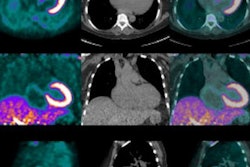Thursday, December 1 | 10:40 a.m.-10:50 a.m. | SSQ04-02 | Room S402AB
This session will address how combining size and metabolic PET/CT parameters for patients undergoing radiotherapy for non-small cell lung cancer (NSCLC) could help clinicians predict survival and determine who would benefit from additional therapy.Madison Kocher, a medical student at the Medical University of South Carolina, and colleagues retrospectively reviewed 100 consecutive patients (median age, 75) from 2008 to 2013 who underwent stereotactic body radiotherapy (SBRT) and PET/CT (Discovery ST PET/CT, GE Healthcare) within two months of initial treatment. FDG-PET scans were acquired after the patient had fasted for six hours and 45 minutes after FDG administration. The researchers recorded each tumor's diameter, volume, maximum standardized uptake value (SUVmax), average SUV, and SUV volume.
Patients with tumors smaller than 2 cm had better overall survival than those with tumors larger than 2 cm, and survival was also better for those with an SUVmax less than 5. Only patients with tumors larger than 2 cm and with an SUVmax greater than 5 had an inferior two-year survival rate, compared with those with neither criteria.
Early-stage lung cancer patients treated with a curative intent with SBRT who have large tumors and an SUVmax above 5 "have poorer survival outcomes compared to patients with neither or only one of those factors," the researchers concluded.
Therefore, combining size and metabolic parameters "improves survival prediction in patients treated with curative-intent SBRT and may allow selection of populations that would benefit from additional therapy," they wrote.




















